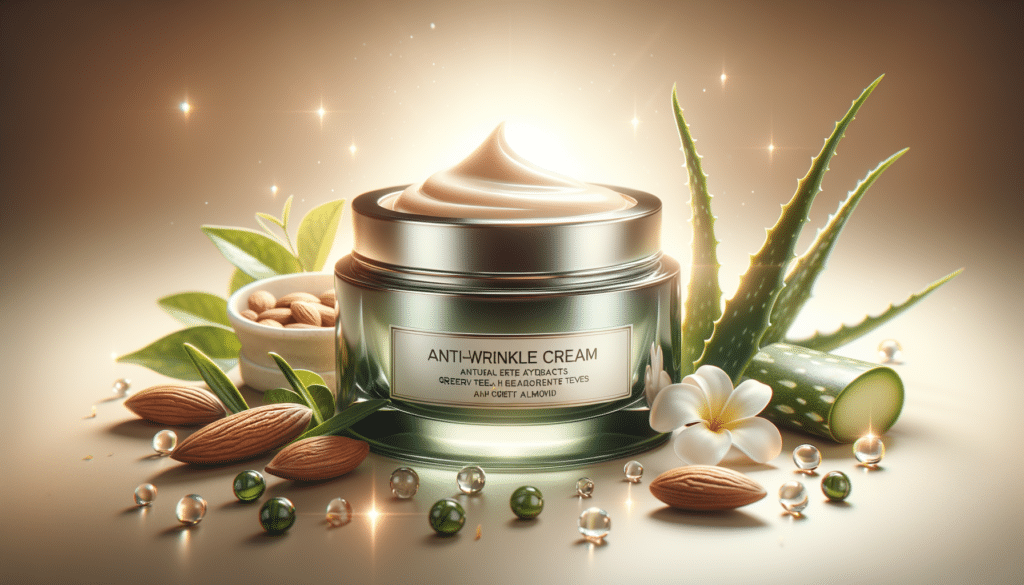The Science Behind Anti-Wrinkle Creams
Anti-wrinkle creams have become a staple in the skincare routines of many, promising to reduce the signs of aging and restore youthful skin. At the core of these creams is a blend of active ingredients that work synergistically to improve skin texture and appearance. The primary ingredients often include retinoids, peptides, and antioxidants. Retinoids, derived from Vitamin A, are renowned for their ability to accelerate cell turnover and boost collagen production, which helps in reducing fine lines and wrinkles.
Peptides, on the other hand, are short chains of amino acids that serve as the building blocks of proteins like collagen and elastin. They play a crucial role in signaling the skin to repair itself, thereby enhancing firmness and elasticity. Antioxidants such as Vitamin C and E protect the skin from environmental damage by neutralizing free radicals, which can accelerate the aging process.
• **Key ingredients**: Retinoids, peptides, antioxidants
• **Benefits**: Boost collagen, repair skin, protect from damage
Understanding the science behind these ingredients can help consumers make informed choices about which products will best suit their needs. While the effectiveness of anti-wrinkle creams can vary based on individual skin types and concerns, incorporating scientifically-backed ingredients can significantly enhance the potential for positive results.
Choosing the Right Anti-Wrinkle Cream for Your Skin Type
With a plethora of options on the market, choosing the right anti-wrinkle cream can be overwhelming. The first step is to identify your skin type, as this will guide you in selecting a product that complements your skin’s unique needs. For those with dry skin, creams with hydrating ingredients like hyaluronic acid and glycerin are essential to maintain moisture balance and prevent further dryness.
For individuals with oily or acne-prone skin, lightweight, non-comedogenic formulas are recommended to avoid clogging pores. Ingredients such as salicylic acid can help control oil production while still providing anti-aging benefits. Sensitive skin types should opt for creams with soothing ingredients like chamomile or aloe vera to minimize irritation.
• **Skin types**: Dry, oily, acne-prone, sensitive
• **Considerations**: Hydration, oil control, soothing properties
By understanding your skin type and its specific needs, you can choose an anti-wrinkle cream that not only targets signs of aging but also supports overall skin health.
Comparing Anti-Wrinkle Creams: What Sets Them Apart?
When comparing different anti-wrinkle creams, it’s important to consider several factors that can set them apart. One of the most significant differences is the concentration of active ingredients. Products with higher concentrations of retinoids or peptides may offer more pronounced results but could also increase the risk of irritation, particularly for sensitive skin types.
Another factor to consider is the formulation of the cream. Some products are designed to be used during the day and may include additional ingredients like SPF to protect against UV damage. Night creams, on the other hand, often focus on repair and regeneration, utilizing ingredients that work best during the skin’s natural renewal process while you sleep.
• **Factors to consider**: Ingredient concentration, formulation, day vs. night use
• **Additional benefits**: SPF for day creams, repair for night creams
Understanding these differences can help consumers select a product that aligns with their lifestyle and skincare goals, maximizing the benefits of their anti-aging routine.
Realistic Expectations: What Anti-Wrinkle Creams Can and Cannot Do
While anti-wrinkle creams can offer numerous benefits, it’s important to set realistic expectations about what they can and cannot achieve. These creams can significantly improve skin texture, reduce the appearance of fine lines, and enhance overall radiance. However, they are not miracle solutions that will completely erase deep wrinkles or dramatically transform one’s appearance overnight.
Consistency is key when using anti-wrinkle creams. Regular application, typically over a period of several weeks to months, is necessary to see noticeable improvements. Additionally, maintaining a comprehensive skincare routine that includes cleansing, moisturizing, and sun protection is essential to support the effectiveness of anti-wrinkle products.
• **Expectations**: Improve texture, reduce fine lines, enhance radiance
• **Limitations**: Not a miracle solution, requires consistency
By understanding the capabilities and limitations of anti-wrinkle creams, users can appreciate the gradual improvements and maintain a positive outlook on their skincare journey.
Incorporating Anti-Wrinkle Creams into Your Skincare Routine
Integrating anti-wrinkle creams into your daily skincare routine can be a seamless process with the right approach. Start by cleansing your face thoroughly to remove any dirt, oil, or makeup that may hinder the absorption of the cream. After cleansing, apply a toner to balance the skin’s pH levels and prepare it for the subsequent steps.
Next, apply the anti-wrinkle cream, gently massaging it into the skin using upward motions to promote circulation and absorption. Follow up with a moisturizer to lock in hydration and enhance the cream’s effectiveness. If you’re applying the cream during the day, ensure that you finish your routine with a broad-spectrum sunscreen to protect your skin from UV damage.
• **Steps**: Cleanse, tone, apply cream, moisturize, sunscreen (daytime)
• **Application tips**: Use upward motions, ensure thorough absorption
By following these steps, you can effectively incorporate anti-wrinkle creams into your regimen, maximizing their potential to rejuvenate and revitalize your skin.





